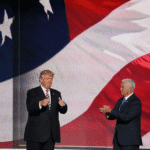The United States has recently made some important changes to its trade and shipping rules. These new rules are a mix of easing some restrictions and strengthening others. The main goal behind these changes is to support American shipbuilding while keeping a close watch on China’s growing control in global shipping. The U.S. Trade Representative’s (USTR) office announced these changes, saying that they would modify certain maritime-related fees and tariffs before new port fees on China-linked ships come into effect next week.
The announcement brought both relief and concern to different groups in the shipping industry. On one hand, foreign-built vehicle carriers and liquefied natural gas (LNG) ships will face lower fees than what was first proposed earlier this year. On the other hand, the U.S. has decided to impose much heavier tariffs on some Chinese-made products such as port cranes and truck chassis. This means the government is carefully balancing its trade rules—trying to be fair but also firm in areas where it sees risks to national industry or security.
According to the USTR, the new fee for operators of foreign-built vehicle carriers will be $46 per net ton, starting October 14. This is a significant change from the earlier proposal made in April, where the fee was set at $150 per net ton—an amount many experts had called too high and unfair. The industry had warned that such a high fee could damage shipping operations and make it too costly to bring goods into the United States. Later, in June, the USTR had considered lowering it to $14 per net ton, but after much discussion, the final number settled at $46, which officials said strikes a fair balance between protecting U.S. interests and keeping trade running smoothly.
The changes don’t stop there. The USTR also said it would remove a rule that could have suspended LNG export licenses for companies using foreign-built vessels. This rule, which had been in place since April, was seen as too harsh by many energy companies. They argued that the U.S. does not yet have enough American-built LNG carriers to meet the country’s growing energy export needs. Without this change, the U.S. might have faced delays in shipping LNG to other countries. By removing this restriction, the government hopes to keep energy exports running without interruptions.

Another part of the update includes a special exemption for certain ethane and liquefied petroleum gas (LPG) carriers that are under long-term contracts. This means that these ships will not have to pay the same high fees as others, as long as they are used in long-term trade deals. The idea behind this exemption is to encourage stable trade relationships and give energy companies the confidence to sign long-term contracts without worrying about sudden fee changes.
These new decisions are part of a larger effort that began earlier this year. Back in February, the U.S. Trade Representative had proposed new actions to counter China’s growing power in the maritime industry and to revive the American shipbuilding sector. China currently dominates global shipbuilding, producing the majority of the world’s commercial ships. U.S. officials have expressed concern that this gives China too much control over international shipping routes and supply chains. The Biden administration wants to bring some of that control back to the U.S. and create more jobs in American shipyards.
However, not everyone agrees with the way the U.S. is handling this. Industry groups had strongly criticized the original proposals, saying they were too tough and would hurt both U.S. importers and exporters. Many shipping companies said that building large modern ships in the U.S. is much more expensive and time-consuming than in countries like South Korea or China. As a result, most companies rely on foreign-built vessels for their business. These groups argued that punishing them with heavy fees would not help rebuild American shipyards—it would only make global trade harder and more expensive.
Listening to these concerns, the government decided to adjust its plans. By reducing fees and dropping some strict conditions, the USTR hopes to encourage cooperation rather than conflict with the shipping industry. At the same time, the U.S. is also taking stronger steps to limit China’s influence in certain areas. The office announced that it would soon impose tariffs ranging from 100% to 150% on Chinese-made port cranes and truck chassis. These items are essential for moving goods at ports and on roads, and the U.S. believes that relying too heavily on China for such equipment could create risks. Higher tariffs are meant to encourage American companies to build or buy these products locally.
A trade expert said, “These decisions show that the U.S. is trying to strike a delicate balance. It wants to protect its industries from unfair competition while ensuring global trade continues smoothly.” This balance is not easy to maintain, especially when global supply chains are still recovering from the effects of the pandemic and ongoing international tensions. The shipping industry is closely watching how these new rules will play out in the coming months.
Energy exporters, especially those dealing with LNG, have welcomed the move. One company executive commented, “This change gives us more flexibility. We can now plan our exports without worrying that our licenses will be taken away just because we use foreign-built ships.” Many believe that this will help the U.S. strengthen its position as one of the world’s leading energy exporters.
Still, some challenges remain. American shipbuilding has been struggling for decades due to high costs, lack of modern technology, and limited government support. Rebuilding this industry will take time and significant investment. While the USTR’s actions may help in the short term, long-term progress will depend on whether the U.S. can make shipbuilding more competitive globally.
In the bigger picture, these changes reflect how countries are rethinking their trade and manufacturing strategies. The U.S., like many others, is learning that complete dependence on foreign production can be risky, especially during global crises. These policy adjustments are part of a broader effort to make America more self-reliant without shutting off international cooperation.
As the new fees take effect and tariffs are implemented, both American and foreign shipping companies will have to adapt. Some will benefit from lower costs, while others may face tougher conditions. But one thing is clear: the United States is taking firm steps to protect its economic interests while trying not to disrupt global trade.


